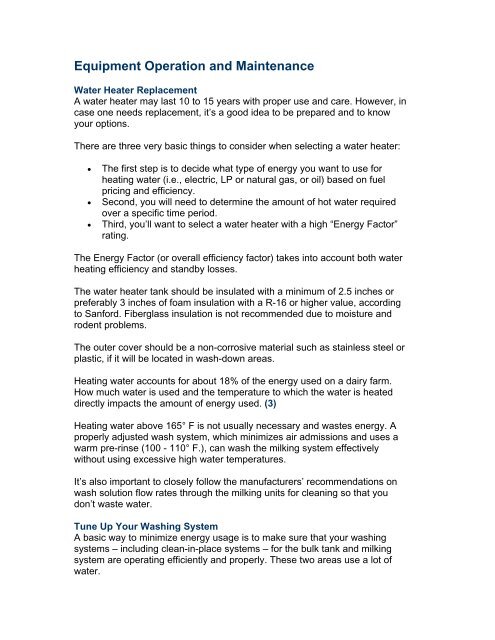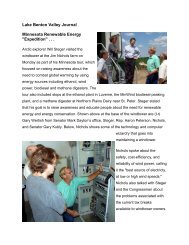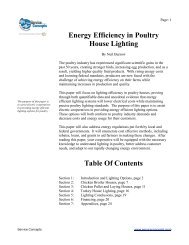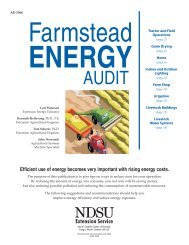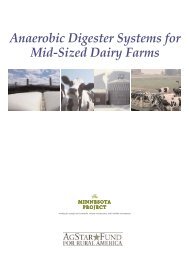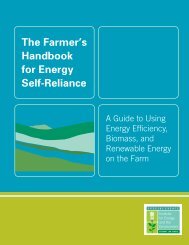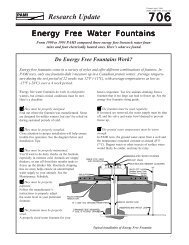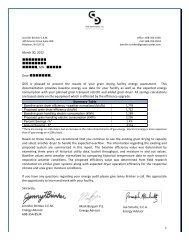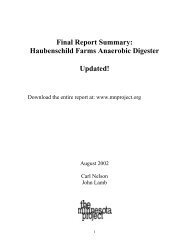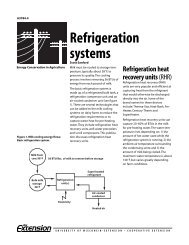Dairy Farm Energy Management Handbook - Wisconsin Department ...
Dairy Farm Energy Management Handbook - Wisconsin Department ...
Dairy Farm Energy Management Handbook - Wisconsin Department ...
Create successful ePaper yourself
Turn your PDF publications into a flip-book with our unique Google optimized e-Paper software.
Equipment Operation and Maintenance<br />
Water Heater Replacement<br />
A water heater may last 10 to 15 years with proper use and care. However, in<br />
case one needs replacement, it’s a good idea to be prepared and to know<br />
your options.<br />
There are three very basic things to consider when selecting a water heater:<br />
• The first step is to decide what type of energy you want to use for<br />
heating water (i.e., electric, LP or natural gas, or oil) based on fuel<br />
pricing and efficiency.<br />
• Second, you will need to determine the amount of hot water required<br />
over a specific time period.<br />
• Third, you’ll want to select a water heater with a high “<strong>Energy</strong> Factor”<br />
rating.<br />
The <strong>Energy</strong> Factor (or overall efficiency factor) takes into account both water<br />
heating efficiency and standby losses.<br />
The water heater tank should be insulated with a minimum of 2.5 inches or<br />
preferably 3 inches of foam insulation with a R-16 or higher value, according<br />
to Sanford. Fiberglass insulation is not recommended due to moisture and<br />
rodent problems.<br />
The outer cover should be a non-corrosive material such as stainless steel or<br />
plastic, if it will be located in wash-down areas.<br />
Heating water accounts for about 18% of the energy used on a dairy farm.<br />
How much water is used and the temperature to which the water is heated<br />
directly impacts the amount of energy used. (3)<br />
Heating water above 165° F is not usually necessary and wastes energy. A<br />
properly adjusted wash system, which minimizes air admissions and uses a<br />
warm pre-rinse (100 - 110° F.), can wash the milking system effectively<br />
without using excessive high water temperatures.<br />
It’s also important to closely follow the manufacturers’ recommendations on<br />
wash solution flow rates through the milking units for cleaning so that you<br />
don’t waste water.<br />
Tune Up Your Washing System<br />
A basic way to minimize energy usage is to make sure that your washing<br />
systems – including clean-in-place systems – for the bulk tank and milking<br />
system are operating efficiently and properly. These two areas use a lot of<br />
water.


